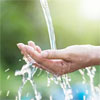Healing The Heart Naturally ~ Part III
 by Marsh Morrison, D.C., Ph.C., F.I.C.C.
by Marsh Morrison, D.C., Ph.C., F.I.C.C.
A “HEALTH INSURANCE” MORNING DRINK
For those who insist on a warm morning drink (and it must never be truly hot lest it blister the throat lining), then here is a good habit to get hooked on: plain warm water plus a tablespoonful (or two) of blackstrap molasses and nothing else. This should be sipped slowly, never guzzled or quaffed like pouring water down a radiator of one’s car. And, as a cautionary note, if the bowels tend to evacuate black or very dark stools it often means that the system cannot metabolize all that wonderful organic iron in the blackstrap molasses, in which case, cut down the dosage of molasses. If you learn to like this as your morning drink you will be gifting yourself with true life insurance; so very good as a life extender is blackstrap molasses. As I have counseled patients for fifty years, successful heart health comes not from always doing what you like, but from learning to like what you have to do. Tie onto this “good habit” of taking a daily spoonful or two of blackstrap molasses and you will bless the day you have read this.
Since you already know that wheat germ conveys precious oxygen to human hearts, here is a delightful way to combine wheat germ with iron-rich, potassium-rich blackstrap molasses: merely spread the molasses over wheat germ bread or toast. Easy to do. Delightful to eat. As healthifying as anyone might want.
It is my firm conviction that if our children were taught in schools or homes that, instead of destructive bacon and egg breakfasts, to take on the “good habit” of a morning wheat germ cereal and wheat germ bread or toast spread with blackstrap molasses, in one generation, the United States would lose its statistical rank as first in all the world as a country of heart disease sufferers. Make the kids know that we are also the world’s highest users of white bread, bread from which the wheat germ has been extracted, and they will grow up knowing how to care for their cardiovascular systems. With that happy prospect we can see the end of heart attacks and nitroglycerin tablets in our future.
Brown rice is another super important heart healing food that I employed in both Greg’s and Mrs. Lawrence’s cases because of its content of pangamic acid. Pangamic acid is a food constituent you will want to know about and remember as a miracle longevity food. It is not only abundant in rice but also in seeds (both sunflower and pumpkin) and in brewer’s yeast.
Shortness of breath that is often associated with cardiac syndromes frequently responds speedily with the addition of pangamic-rich foods to the diet. Moreover, when severe heart pains exist, I have noted improvement in a few days when foods rich in pangamic acid were used, together with about 600 units of vitamin E per day. If in addition I employed an ordinary intake of 25,000 units of vitamin A, say, from fish liver oils, troublesome heart pains entirely ceased in about two weeks in stubborn cases.
For children who greatly love desserts, and also for older persons such as the aforementioned Mrs. Lawrence, I order a daily rice pudding as an after-meal treat. The rice pudding (brown rice only) has a topping of blackstrap molasses and a generous sprinkling of raw pecan nuts, chopped fine or coarse. The nuts are particularly valuable in heart cases because of their content of pyridoxine about which I shall speak directly.
PECANS FOR THE HEART
Pyridoxine has long had its food value to me because of its ability to hasten regeneration of stricken heart cells. It is one of the lesser known factors of the vitamin B family. If the human body that suffers so much mechanically because it functions and labors straight up against gravity’s pull, is put back into alignment so the various parts of the body can perform the jobs for which they were created, the daily ingestion of pangamic-bearing foods helps the heart in a definite manner. It is needed very precisely in the conversion of the amino acids into proteins. Once converted to normal end products of digestion, the consumed protein is utilized to replace the damaged cells of the ailing heart.
For the best and most effective consumption of pyridoxine, I employ raw pecan nuts. The reader already knows about my enthusiasm for wheat germ and blackstrap molasses; part of this enthusiasm stems from the valuable pyridoxine content within both wheat germ and molasses. If it is referred to as vitamin B-6, that’s pyridoxine acid of the B complex.
These pyridoxine-abundant items are healing and life extending foods in a real sense because of this vital fact: they not only heal but prevent heart disease by feeding the nerves that lead to the heart—all this by way of properly converted and utilized amino acids residing in the consumed protein foods.
RICE WATER: THE HEART HEALTH BEVERAGE
Rice water is the drink I advise cardiac sufferers to depend upon. It may be assumed that everyone knows how to made rice pudding or how to cook brown rice; if not, it can be learned quickly by consulting any cookbook. To make rice water, however, one uses four times as much water in the pot as one normally uses to cook plain rice. Allow the rice and water to soak overnight, then cook the rice in the ordinary way. This must be watched because after being softened by overnight soaking, the rice will cook more speedily than one expects. When cooked, what you have is a kind of rice soup. Drain off the rice kernels and save them for a rice dish, keeping a bit of the water for reheating. The rest of the rice water is refrigerated, then sipped as a drink throughout the day.
For those who desire a tasty flavor in their rice water, here again the addition of just a touch of blackstrap molasses provides a delicate cold drink. I advise that it be sipped slowly, never just thrown down the gullet in torrents. And for best results the rice water ought to be used between meals, not at mealtimes because it waters down the stomach enzymes that are prepared to work your foods down to digestive acceptability by the system.
For a warm (never very hot) drink, add a little more than a touch of molasses, even add a bit of lemon juice if desired. Remember, however, not to overdo the molasses. If you used it on rice pudding do not indiscriminately add it to other foods or drinks. The human system cannot use more than a tablespoonful or two daily; if overdone, the resident organic iron will spill over the eliminating threshold and be evacuated as blackish stool matter. Remember that our great-grandmothers gave us sulfur and molasses as the annual spring system cleanser.
WONDERFUL BIOFLAVONOID DRINKS
In all cardiac conditions I have for years advised the generous consumption of bioflavonoids, a substance found in a variety of fresh foods, especially green peppers and oranges, because on the empirical level, bioflavonoid-rich foods speeded recovery of heart disease cases. Not only in colds and infections did I find bioflavonoids a natural healing substance, but in heart conditions bioflavonoid drinks interchanged with rice water provided the best liquid intake I could find.
I sometimes refer to the “bioflavonoid orange juice” as a desired drink. This means only that the entire orange is cut up and put into a blender, skin and white tissue and seeds and all, then whirled around at high speed to make a delicious natural drink. Within the content of this type of drink is the rich bioflavonoid portion of the vitamin C family that both prevents and treats systemic hemorrhages, rheumatic fever, overly thin and fragile capillaries, even wombs that tend toward miscarriage. In cases of heart disease, the value of daily bioflavonoid drinks cannot be excelled, especially when alternated with pangamic acid-rich rice water.
For the especially valuable type of bioflavonoid drink that I recommend, here is the formula. Prepare the juice of about 12 oranges or the contents of a 12 ounce can of frozen unsweetened orange juice, or, put more easily, a quart of orange juice to which will be added one whole lemon. Cut up the lemon into very small bits, using all of it—peel, white inner sheath, pulp, everything. Pour a cupful of orange juice into a blender together with the finely chopped lemon, whirl at high speed and add it to the rest of the quart of orange juice. Now you have a quart of orange juice plus an entire lemon, and this can be sipped cold or heated to make a quite fine and decidedly helpful morning drink. In my own household I have for years had a warm bioflavonoid drink whenever I desired a heated morning beverage.
MIRACLE SUNFLOWER SEEDS
I have never found an item of desirable protein food for heart patients better than sunflower seeds. I have tried various types of proteins with such cases: cottage cheese, avocado, beans of different kinds (of which only soybeans proved adequate), red salmon, broiled fish (of which halibut and mackerel were best), chicken drumsticks with skin and gristle removed, even many grains. But in the order of their importance and helpfulness in cardiac dysfunctions I established the following. Two ounces of sunflower seeds came first, taken only at one of the several small meals a day for best effect. The other meals are devoted purely to soups, salads, grains, fruits, vegetables, etc. Next in importance came egg yolks, but only in heart cases, for reasons which I shall give presently. Next came pumpkin seeds, only two ounces at a meal, raw (untoasted) and unsalted and hulls removed. This is especially recommended in heart cases of males with prostate gland problems. Wheat germ eaten as a protein would come next. Then soybeans, broiled fish, red salmon, cottage cheese, chicken legs.
It is important to take no more than about two ounces of hulled sunflower seeds and make a meal of it with a raw vegetable salad. For dressing on the salad I strongly advise a teaspoonful or two of wheat germ oil, for the oil contains that vitamin E factor that enables one to “make do” with the poor quality of air in our polluted atmosphere. It is also urged upon heart cases not to eat protein items at other meals other than the one where sunflower seeds is the main item.
Protein is absolutely vital to the health of any human being. But the human system cannot store it as it can fats or starches (which pile up as extra weight and make you fat). However, while vital to human existence, the body’s capacity for metabolizing protein is sharply limited to no more than two ounces a day at the very outside. This is acutely evidenced in cardiac cases, for they respond sensitively to protein intake, good or bad. When good, as in the use of sunflower seeds, recovery is hastened. When bad, as with red meats or preserved fishes, cheeses, delicatessen products, their protein overload putrefies into three smelly acids—indol, skatol and phenol—which gives human stool its characteristically bad odor, and this slows recovery to a halt. Those with chewing problems or false teeth may purchase an inexpensive nut grinder at a health food store for under twenty dollars and grind the sunflower seeds (or pumpkin seeds) to a fine and manageable consistency.
Now the matter of eating eggs ought to be considered forthrightly and scientifically. In almost all cases I am against the use of eggs, most especially the eating of egg yolks, for they do indeed raise the blood cholesterol level. Yet in the heart cases I actually advise the consumption of as much as one egg a day, preferably poached or medium boiled, never soft-cooked or raw.
Does this represent an inconsistency? Why should I strike out against eating eggs in general and advise the taking of an egg a day in cases of cardiac dysfunction? The reason, stated succinctly and scientifically, is this. The ailing heart needs choline. Choline is a substance found in good quantity and quality in egg yolks. British journals of research have documented this fact beyond reasonable doubt. Therefore, despite its other negative factors, I do advise a limited use of eggs in heart cases.
What about the cholesterol business? Recent pontifications of governmental Health Advisory Boards refute the old idea that eggs should be avoided because they tend to raise our cholesterol level in the blood. Since the body itself manufactures cholesterol, say these “authorities,” it does not matter how many eggs one eats or doesn’t eat. To such a declaration I say piffle and balderdash. These men with impressive authoritative titles cannot know anything about sick people on the pragmatic level when they say that in their “studied opinion” diet really doesn’t have anything to do with health. “Merely eat a balanced diet with something of each food classification,” they say, “and that is all anyone can do about health, diet-wise.” I consider such an opinion unworthy of serious consideration. If these “authorities” ever had to deal with actual cases of sick human beings they would know that any person, without exception, with a high cholesterol count increases the count when consuming a couple of eggs as a daily breakfast item of nutrition. Contrary to this, when a person actually sick from overly cholesterol-rich blood reduces or eliminates the use of eggs the cholesterol level goes down and down and down.
It is true that one’s liver makes cholesterol even if we do not overeat cholesterol-bearing foods. But what we cannot control we just cannot control. It is what we can control that concerns us. Surely we can control the manufacture of cholesterol in addition to what the liver produces, and this is done through eliminating eggs and other cholesterol-abundant foods.
Yet—despite all this—I actually advise heart patients to consume one egg a day. It is exactly because the choline that is needed by the damaged heart is so abundant in egg yolks that in this instance the advantage more than compensates for the disadvantage of egg consumption.
In all cardiac cases I most strongly recommend the taking of a good quality vitamin E, those usually available in health food stores rather than those manufactured by pharmaceutical firms. In most cases I have found 600 International Units to give good results, say 200 I.U.s after the morning, noontime and evening meals. Because vitamin E is an oil-soluble substance, it is better to take the 200 units after meals—preferably after meals that have some oil content (such as salad oil on raw vegetable salads) than before meals.
A good way to ensure the consumption of vitamin E is to take a teaspoonful of wheat germ oil daily in heart cases. I advise taking this at bedtime, when it interferes with no food in the stomach and is most readily absorbed and utilized. Taking a daily teaspoonful of wheat germ oil is a pleasant and safe way to buy life insurance, adding years to life and life to your years.
MORE WHEAT GERM WONDERS
Here we come to the food item that is most nearly the miracle longevity food with respect to vitamin E and the heart. It is wheat germ. Consider the following, please.
Two research workers of Milano, Italy, Magno and Rovesti, came up with a most significant finding in the field of wheat nutrition. By extracting the juice as it comes from the field they found that this wheat juice from whole wheat had special benefits for the victims of heart disease. Not only that, but the same juice pressed from whole wheat markedly helped prostatitis in the male, painful menstruation in the female, even impotency of a progressive nature. On boring into the reasons for all this helpfulness it was learned that these healthifying results stemmed from the high quality of vitamin E in the newly extracted wheat germ juice. It helped establish the presently accepted fact that a very high quality of essential vitamin E materially benefits the heart as well as the reproductive organs.
This much, then, about primary foods for the heart.
In considering garlic I am myself not exactly sure whether its classification should be primary or secondary in dealing with heart healing nutrition. Garlic is so good and useful an item in cardiovascular cases that it almost belongs up there with wheat and blackstrap molasses and lecithin and the rest.
GARLIC: NATURE’S OWN ANTIBIOTIC
Raw garlic is a classic longevity food of especial value in cardiac disturbances. Most people already know about the usefulness of garlic in reducing hypertension. People with abnormally high blood pressure have used garlic here and abroad in such large numbers as to establish its clear value beyond any peradventure of doubt. And the oil of garlic has been known to still the terribly frightening pain of angina pectoris in a mere five days.
If you or a loved one suffers angina pain I suggest you try this miracle longevity food, but only in the raw state and in large doses. I recommend several cloves of finely chopped garlic swallowed down with distilled water, say, two or three times daily, chiefly between meals.
It should interest all of us that the work with garlic done by the Soviets has caused the item to be labeled “Russian penicillin.” This label has validity. It is the best natural anti-infection food item known to man. Within the system, it acts with almost the pharmacological power of penicillin or the other antibiotics, but without side effects. By swallowing chopped raw garlic as aforementioned, there is no offensive breath. After continued treatment of oneself with raw garlic, however, there is some exudate or emanation of a slight garlic odor from the lungs, but this is so low-grade as to be inoffensive.
We all know that heart attack victims are rushed into oxygen tents on arrival at hospitals. We should in this context also know two factors: one, that garlic abates and often wholly eliminates the agonies of angina; two, that a single spoonful of wheat germ oil daily provides about as much oxygen to the stricken heart as can be provided by a conventional oxygen tent. The reader will hopefully note the value of combining these two miracle longevity foods in heart problems. Since I established the policy in cardiac cases of daily doses of both wheat germ oil and raw garlic, all patients with heart problems got well better and faster naturally.
Another point of importance here. Even when garlic is not taken by mouth but merely crushed and the vapors inhaled, it appears to help. For years I have advised the vapors of garlic instead of old-time smelling salts when one had “the vapors,” as they used to be called..
One final word. Because it became known as “nature’s own natural antibiotic” by reason of its detoxifying and anti-infection qualities, I and other doctors in the forefront of nutritional advances have used raw garlic as a paste applied to open wounds with incredible success. Even when flesh is gouged from the body and we have an open gaping wound, garlic paste applied directly into the wound prevented septicemia (blood poisoning) in cases where septicemia was an expected sequel. And although some nutritionists have called garlic an intestinal irritant, I do not agree; and even if it were, the value of raw garlic for heart problems and for a variety of other ailments clearly outweighs any possible demerits.
Let us consider yogurt as a kind of secondary or “helper” miracle longevity food for the heart. In all cases I refer to plain yogurt, never the kind that is fancied up with sweet fruit jellies that I consider abominations. If indeed one needs fresh yogurt sweetened, a dollop of honey will do the job.
There is an importance to yogurt aside from its value to heart patients and those with digestive difficulties. I speak of fungus infections. Yogurt, in common with buttermilk, and also to a great extent sour milk, contains an abundance of lactic acid bacilli. These microorganisms protect you against the fungi which seek to successfully invade your innards. If you have ever had a case of athlete’s foot you know how well-nigh ineradicable are these fungus infections. But if you have a good, high-grade implant of lactic acid bacilli they will hold the fungi in check and you are not likely to suffer any fungus misery.
All readers who have ever taken a course of antibiotic drugs for any complaint at all should have been told that antibiotics tend to destroy these marvelously protective lactic acid microorganisms. That’s why we so often see rectal itching and cracked corners of the mouth; it’s the fungi having a field day in the body and working into orifices because the antibiotics have killed the lactic acid bacilli that normally hold them in check. Therefore, without fail, I advise the taking of at least one 4 ounce cup of yogurt, and even two such portions, every day until you have reimplanted a new intestinal flora. This you will know when the itching ceases and the tongue or mouth heals.
To some extent the sulfa drugs also kill the lactic acid bacilli. Now the reader can realize the importance of a work like this where natural, health giving miracle longevity foods are given for various illnesses, rather than drugs which have side effects and can destroy the inner protective organisms.
If your doctor who prescribed the antibiotics did not tell you to take yogurt (or buttermilk) following his course of treatment, I can say frankly out of years of experience with drug prescribing doctors that either he did not know that his antibiotics destroyed bodily protective microorganisms in the fungi class and the lactic acid bacilli needed to be restored, or he did not care or was too busy to take the time to free you of future ailments.
To tie all this together, to prevent suffering of all kinds of infections after antibiotics because you lack the “good” bacilli to protect you, you are advised to consume every day from four to eight ounces of yogurt, or a full quart of buttermilk from skimmed unpasteurized milk, or bulgaricus or acidophilus milk. This must be continued every day for about one month. It will re-implant the needed intestinal flora and provide protection against internal infections.
For double value in heart cases as well as digestive ills, flavor your cup of yogurt with a full tablespoonful of blackstrap molasses. If really keen about gaining natural health rapidly, I also advise sprinkling a dash of chopped pecan nuts on top for a sundae-like effect.
In my own home as a special treat I make the following dish. Spoon the yogurt out of the cup into a dish. Pour a tablespoon of blackstrap molasses over it. Sprinkle a good handful of finely (or coarsely) chopped raw pecans on top of everything. Then, as the big prize, add wheat germ in plentiful supply to everything and you have something better than anything the United States Pharmacopoeia can offer.
Although not strictly classifiable as a food, I take the liberty of including brewer’s yeast as a healing food item for the heart. In another context, yeast is a good source also of nerve food, and when you are nerve strained or are given to nervous crying jags, a spoonful of yeast powder in a glass of distilled water or together with spoonfuls of plain yogurt, will often steady you remarkably and quickly. In this context, however, the daily use of debittered yeast is strongly urged because it contains biotin for the heart. Biotin is another of those natural specifics for heart pain. It has no side effects whatsoever. If the yeast makes one gassy, then a bit of lemon in the water with which it is swallowed tends to hold down gas formation.
Excerpt from Doctor Morrison’s Amazing Healing Foods
See Part II here.
Posted in Health, Other Topicswith comments disabled.





